|
Printables |
PowerPoints |
Online exercises |
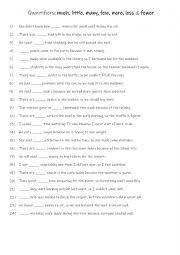
|
A2-B1 Quantifiers - much, little, many, few, more, less & fewer
Students familiarise themselves with the 7 quantifiers and their use and meanings . Then they read the sentences to see which quantifier is needed/ suitable to complete the gap-fill.
Level: elementary
Age: 8-100
Type:
Downloads: 102
|
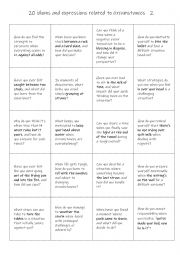
|
B1+-C1 Circumstance idioms and expressions 2
This is a speaking reinforcement activity to supplement the other worksheet I uploaded earlier this year. Students working in pairs or small groups can either ask each other the questions or answer the question themselves.
Level: intermediate
Age: 12-100
Type:
Downloads: 121
|
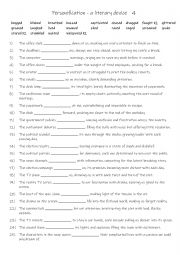
|
B2-C1 Personification - a literary device 4
Learning personification helps students bring their writing to life by giving human qualities to non-human things, making descriptions more engaging and relatable. It enhances creativity, allowing them to craft vivid imagery and evoke emotions in their readers. Understanding personification also deepens their appreciation of literature, as it is a ...
Level: intermediate
Age: 12-100
Type:
Downloads: 141
|
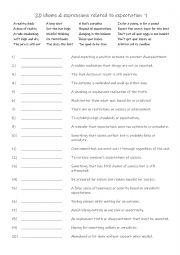
|
20 expectation idioms & expressions B1+-C1 part 1
First, students need to familiarise themselves with the 20 idioms and expressions and their meanings. Then they read the definitions to see which one is being described and write that word in the space provided Answers on page 2.
Level: intermediate
Age: 12-100
Type:
Downloads: 118
|
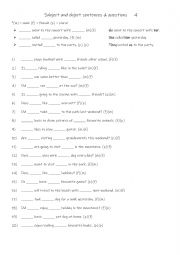
|
Subject and object sentences & questions 4
Students complete the subject and object sentences & questions using the following key: *(m) = male (f) = female (p) = plural. Answers on page 2.
Level: elementary
Age: 8-100
Type:
Downloads: 108
|
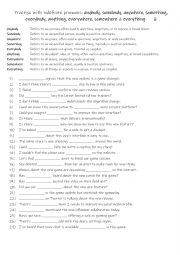
|
A2-B1 Practise with indefinite pronouns anybody, somebody, anywhere, something, everybody, anything, everywhere, somewhere & everything 6
Learning indefinite pronouns like anybody, somebody, anywhere, something, everybody, anything, everywhere, somewhere, and everything is essential for students to express general ideas or refer to non-specific people, places, or things. These pronouns are commonly used in everyday communication to ask questions (e.g., "Is there anybody here?"), make...
Level: elementary
Age: 9-100
Type:
Downloads: 114
|
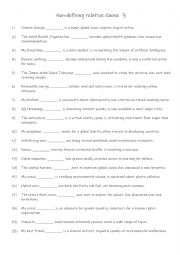
|
Non-defining relative clause 3
Students complete the gap-fill with the correct word. Answers on page 2.
Level: elementary
Age: 8-100
Type:
Downloads: 110
|
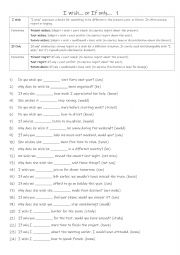
|
B1-B2 I wish�. or If only�. 1
Students should learn "I wish�" and "If only�" because these structures enable them to express regrets, desires, and hypothetical situations, adding emotional depth and complexity to their language (e.g., I wish I knew the answer or If only I hadn�t missed the train). They help students communicate feelings like hope, frustration, or disappointment...
Level: intermediate
Age: 10-100
Type:
Downloads: 102
|
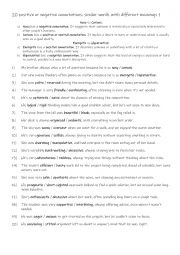
|
B1-B2 20 positive or negative adjective connotations - similar words with different meanings 1
First, students need to familiarise themselves with the sentences with 20 connotations and check their meaning of each word. Then they read the sentences to see which one is best to complete the sentence. Answers on page 2.
Level: intermediate
Age: 11-100
Type:
Downloads: 115
|
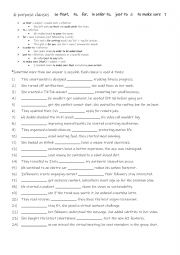
|
6 clauses of purpose 1
First, students need to familiarise themselves with the 6 clauses of purpose and their formation. Then they read the sentences to see which one is suitable to complete the gap-fill. Each type is used 4 times! Answers on page 2.
Level: elementary
Age: 9-100
Type:
Downloads: 110
|
|
|
|
|












